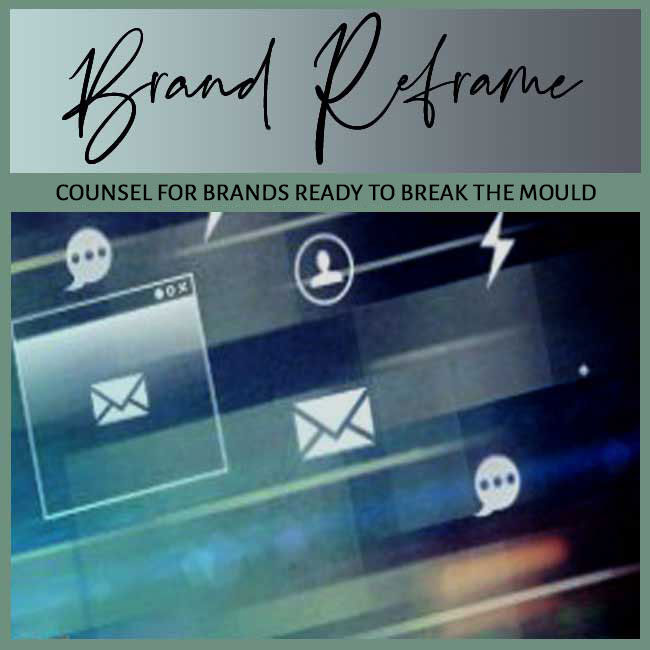
BY: SHOBHA PONNAPPA | BRAND BREAKTHROUGH STRATEGIST | 45 YEARS | 125+ CLIENTS
Brand voice is the distinctive personality, tone, and style through which your brand communicates across every channel. It is not just about what you say, but how you say it … the choice of words, the rhythm of sentences, and the emotional cues that shape your audience’s perception. A strong brand voice is consistent, recognisable, and tailored to resonate with your specific audience, regardless of platform or format.
As a Brand Breakthrough Strategist, I’ve seen brands treat voice as a one-time creative exercise, only to drift back into generic language over time. In reality, brand voice is a living asset … it grows stronger through repeated, consistent use and weakens when neglected. When a voice is clear and authentic, it acts as a thread connecting every touchpoint, making the brand feel cohesive, trustworthy, and human.
In a saturated market, your products and services are not the only differentiators … your communication style plays a huge role in whether you are remembered or forgotten. Consumers are bombarded with messages every day, and they instinctively filter out the ones that feel impersonal or formulaic. A strong brand voice cuts through the noise, giving people a reason to stop scrolling, listen, and engage.
Today’s audiences expect authenticity, which means they look for brands that sound human, relatable, and aligned with their values. Without a clear voice, your message risks being misinterpreted or ignored entirely. With one, you gain the ability to convey not just information, but also emotion, intent, and trustworthiness in every interaction.
Core personality alignment is about defining the human traits your brand would have if it were a person, and then ensuring those traits guide every piece of communication. This is not about being clever for its own sake … it’s about using personality to make your brand relatable and memorable. If your brand is adventurous, warm, and optimistic, those qualities must be evident in your tone, word choice, and pacing.
The most successful brands revisit their personality framework regularly to confirm it still reflects who they are and what their audience values. Over time, your brand may evolve, and so should the nuances of your personality. Without that alignment, your voice risks sounding forced or outdated, weakening the connection with your audience.
An audience-centric tone means adapting your voice so it feels natural to the people you most want to reach. This does not mean abandoning your personality; it means adjusting the delivery so your message lands effectively. For example, a professional B2B audience may respond to confident, precise language, while a youth-focused brand might lean into informality and cultural references.
The trick is to balance consistency with adaptability. Your tone should remain unmistakably yours, even as you tweak vocabulary, sentence structure, and pacing for different contexts. When you get this right, your brand voice feels both familiar and relevant … a combination that deepens trust and engagement.
Linguistic consistency is the disciplined use of specific words, phrases, and stylistic rules that make your brand voice distinct. Think of it as your verbal brand guidelines … your preferred vocabulary, your stance on jargon, your approach to punctuation and grammar. Without this, even a well-defined personality can get diluted by inconsistent execution.
Maintaining linguistic consistency across multiple contributors and channels requires documentation and training. Teams need a shared reference so they can produce communications that align seamlessly with the brand’s voice. Over time, this consistency compounds, creating instant recognition whenever your audience encounters your words.
Emotional authenticity is about ensuring your brand voice reflects genuine beliefs and intentions, not manufactured sentiment. Audiences are quick to detect insincerity, especially when brands adopt causes, trends, or humour that don’t align with their real identity. A strong voice only works if it comes from a place of truth.
The best way to achieve this is to write from lived values and to communicate with empathy. When your brand voice expresses authentic emotion … whether it’s excitement, concern, or gratitude … it resonates more deeply. This authenticity turns your voice from a marketing tool into a trusted presence in your audience’s lives.
Creating a strong brand voice begins with clarity about who you are, who you serve, and what you stand for. Before writing a single word, define your brand’s core personality traits and ensure they align with your mission and market positioning. This foundation ensures your voice is not arbitrary but an authentic extension of your identity.
From there, create a voice guide that documents tone, preferred vocabulary, and writing style, complete with examples for different channels. This guide should be practical enough for anyone on your team … or any partner agency … to follow. The earlier you build this framework, the faster you achieve consistency across all brand touchpoints.
A strong voice is not set in stone … it needs to be revisited and refined as your brand evolves. Audience preferences, industry trends, and cultural contexts shift over time, and your voice must adapt without losing its core identity. Regularly auditing your communications helps you spot where your tone has drifted or become inconsistent.
Sustaining a strong voice also depends on internal alignment. Train team members and collaborators to use your brand’s tone and style effectively. When everyone speaks in the same, consistent voice, the brand feels unified and dependable to your audience.
One of the biggest pitfalls is confusing brand voice with campaign style. A campaign may have a specific creative tone, but your brand voice must be broader, guiding every piece of communication long after a campaign ends. Brands that conflate the two often find themselves sounding inconsistent once the campaign is over.
Another common issue is diluting your voice through too many hands in the writing process without a clear set of guidelines. Without guardrails, each contributor’s personal style can overshadow the brand’s own personality. This leads to a fragmented brand presence that erodes trust and recognition.
A B2B software start-up was struggling to stand out in a crowded space where most brands used cold, technical jargon. I helped them define a friendly, plain-English voice that made their product benefits accessible to non-technical buyers. Within six months, their content engagement doubled, and lead conversion improved by 35%.
A non-profit’s voice was too formal and bureaucratic, alienating the very community it served. When I helped them shift to a warmer, story-driven tone that celebrated personal impact, they saw a surge in donor retention and volunteer sign-ups. This reframe built emotional connection without losing professionalism.
A fashion retailer used different tones on its website, social media, and ads … playful in one channel, formal in another. I gave them a unified voice guide with which they brought coherence, making the brand instantly recognisable regardless of platform. This consistency led to stronger brand recall and a measurable lift in repeat sales.
A management consultancy’s web copy was a cliché-filled mix of “innovative solutions” and “driving success,” indistinguishable from competitors. By helping them identify unique differentiators and infusing them into a confident, authoritative voice, I helped the brand begin attracting higher-quality leads who valued their specific expertise.
An influencer kept switching tone to match trending social content, causing her audience to feel disconnected. I told her this: returning to a consistent, values-led voice can rebuild trust and increased audience engagement. It did by 50% within three months. Her brand regained its sense of direction and stability.
A global FMCG brand needed to adapt its communications for multiple markets without diluting its identity. By helping them develop regional voice adaptations anchored in shared brand principles, I helped them resonate locally while remaining unmistakably the same brand worldwide.
Brand voice is the personality and tone you use in communication, while brand messaging is the content of what you say. Messaging answers “what to say,” and voice answers “how to say it.” Both work together to create a consistent brand experience that resonates with your audience. Most businesses, however, confuse the two … messaging and voice. Knowing one from the other is extremely vital.
Yes … in fact, it should evolve as your brand matures and market conditions shift. However, evolution should be intentional, not reactive. Keeping your core traits intact while fine-tuning tone ensures you stay relevant without losing your brand’s recognisable character. Authenticity is the one trait that helps keep your brand voice core intact, even as it evolves with time.
Absolutely. Even if your team is small, documenting your brand voice helps ensure every piece of content feels cohesive. Without this, inconsistencies can creep in, making your brand appear unpolished and harder to remember. As you grow in size, and your employee base increases, your voice will only get weaker.
Start with a concise voice guide containing examples for different situations … social posts, website copy, email campaigns, etc. The more detailed your guide is, the better. Conduct periodic reviews and give feedback on real content to reinforce the guidelines. Training is not a one-off task; it requires regular reinforcement.
A single brand should have one core voice, but it can flex in tone depending on context. For example, you might be more playful on social media and more formal in investor reports … but the underlying personality remains the same. This balance keeps your brand relatable yet consistent. Learning to flex your brand voice without losing its core identity is one of the most important lessons to learn.
Track engagement, message recall, and sentiment across your communications. If people can describe your brand’s “personality” without seeing your logo, you’re on the right track. Consistent voice should result in higher trust, loyalty, and differentiation in your market. Remember, if your context has evolved so much that a totally different voice is needed, its better to create a new sub-brand than to change the voice of the core original brand.
Explore Brand Voice Confusion … Real Cases & Fixes
Case Studies
FAQ Insights

"One BIG IDEA can turn brand stagnation into unstoppable movement. Spots are limited each week ... book your breakthrough session now."
Shobha Ponnappa
My Definitive Guides to Other Critical Branding Concepts
Smart insights, real-world frameworks, and idea-driven clarity – designed to help brands move.
Get my fortnightly Brand Reframe newsletter. Smart insights, distilled thinking, and focused momentum to help your brand lead.

Get my free AI strategy guide. Smart prompts, sharper briefs, and practical ways to make AI support your brand momentum.

Just fill in the form to join. Get my newsletter and the guide shown alongside, all with several game-changing tips.